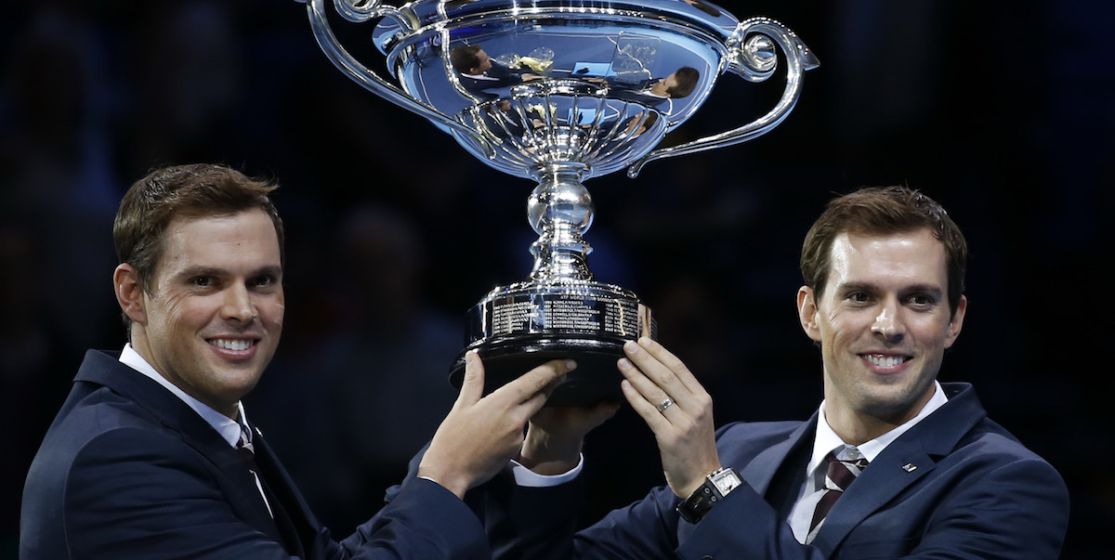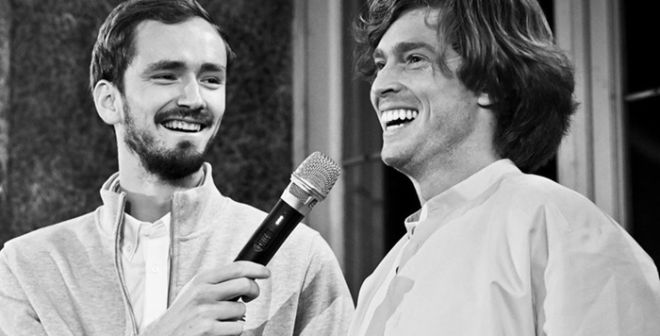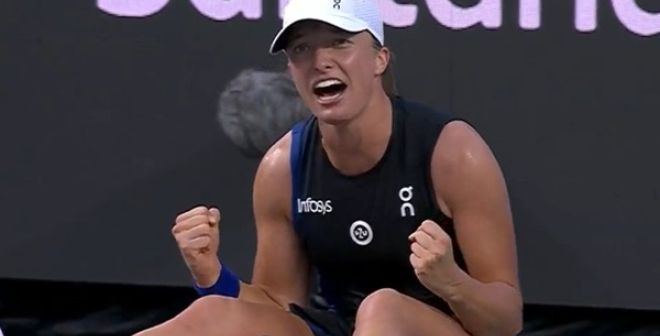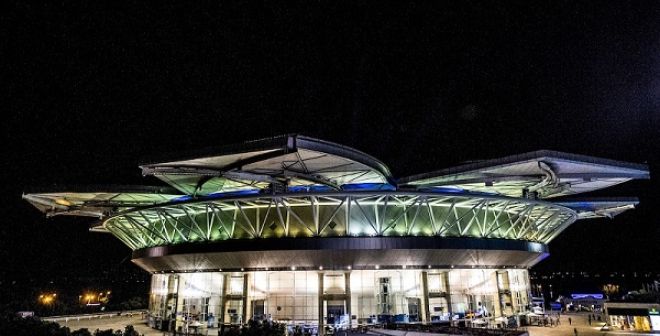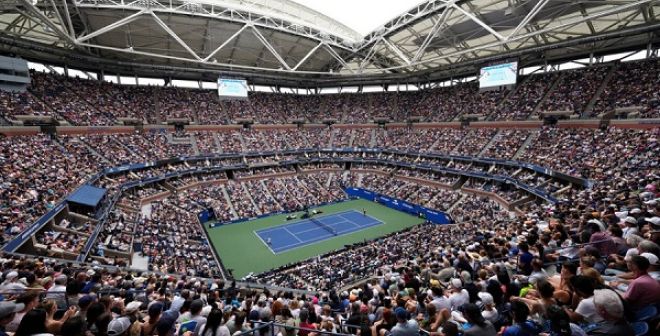History is funny, even when a global pandemic shakes the world. The Bryan brothers had planned to retire after the 2020 US Open, but the COVID-19 pandemic put the season on hold for several months. In February 2020, the California-born twins, who now live in Florida, did not know that their 119th title would be their last, and that they would never play another ATP match. It was in Delray Beach, Greater Miami. They were at home. Funnily enough, after the final, Mike said, with a smile on his face: “We’re flying high; it might be a good place to shut it down. We’ll talk about it tonight, see if he wants to retire here, in Delray! (He laughed) No, we still have some good months of tennis left.” Actually, their last trip would be in Hawaii, where they would win their doubles for the USA against Uzbekistan in a Davis Cup qualifying match.
"I felt like I was being smothered"
From 1998 to 2020, Mike and Bob smashed every record in doubles – number of matches (1,108), of tournaments (119), of Grand Slam titles (16), of overall weeks as ATP #1 (438), of consecutive weeks as ATP #1 (139), etc. Not only did the Bryan brothers win every Grand Slam tournament at least twice, but they have also been the only duo to win every major competition on the circuit – twelve versions of the nine Masters 1000 tournaments. At their peak, in 2012-13, the won the Olympics, the US Open, the Australian Open, the French Open and Wimbledon, not to forget the 2007 Davis Cup, when they won all the doubles with the USA.
“They are the most compatible players for doubles; one is left-handed, the other is right-handed, and they are twins. They share a perfect connection, and they have outshone the world for ten years,” says Mickaël Llodra, who lost to them in the London Olympics final. “They had everything. The left-handed brother could even have had a great career in singles, but he chose to stand by his brother.”
When he decided to play doubles only, Nicolas Mahut saw the Bryan brothers as “role models”. “They had something special: the bigger their lead, the fewer they talked, and they just scored one point after the other. I’d feel somewhat suffocating, it was intimidating,” says Mahut.
Where did that smoothness come from? Did they have a sixth sense or some telepathic gift? Or was it born out of hard work? In 2008, Mike, who is the oldest (for two minutes) and the shortest (for one inch), gave the answer in a USA Today interview: “People always say that, because we are twins, we have this magical, innate sense of telepathy when we're on the court. We let the media, the fans and the other players go with that. But really the reason why we flow together so well on the court is because we've played thousands of matches together.” They only faced each other three times in singles as professional players (1998-2000): 2-1 to Mike.
Tears and withdraws
Robert Charles and Michael – their full names – may not have a telepathic connection, but they have been together since they were born. Wayne, their father, relates an anecdote from 1978 and the aftermath of their birth: “They could not stop crying, they were almost dehydrated. Eventually, a senior nurse understood that they were identical twins. So, she simply put their cribs next to each other. They stopped crying, and they never cried again.”
A lawyer and musician, Wayne was also a tennis instructor; Kathy, their mother, is a former professional tennis player who played Wimbledon four times in the 1960s. So, it was natural for the twins to grow up playing tennis in southern California, so much they made tennis courts their playgrounds. However, their parents forbid them to play against each other in competition; when they were younger, any time Mike or Bob would make it to a final tournament, they would alternatively forfeit so that both could put a hand on the trophy; it happened about thirty times. Consequently, these fans of the Jensen brothers, who were stars of doubles in the 90s, never grew any form of rivalry between each other.
What if the perfect alchemy that drove them throughout their two decades as professional players was born back then? “A lot of kids who play tennis, they dream of being No. 1 in the world in singles,” Wayne Bryan said in the New York Times, in 2020. “But with identical twin brothers with the exact same DNA and the exact same parents and same coaching and same club… How can you be No. 1 in the world if you’re No. 2 in your own bedroom? So, we never wanted them to play and compete against each other. They were born to play doubles.”
Chest bump, wall and talk shows
In 1996, the Bryan brothers won the US Open Junior doubles. In 1998, they won their first pro matches. Back then, right-handed Mike played on the left side, with left-handed Bob on the right side, but they would soon switch side, so their forehands were "inside" the court when returning a serve. “Simply because Bob was lethal with his forehand in the centre,” says Llodra. “Whereas Mike could return very well from either side.”
Bob had a better serve, Mike had a better return, but both were as one on volleys. “It was so hard to pass them, they would never miss a shot; they were a wall,” says Llodra. A wall with two identical pillars, as the Bryan brothers shared everything; they had the same outfits, the same caps, the same rackets… “It was their trademark. When they were at the net, it was sometimes hard to tell who was Bob and who was Mike,” says Lionel Roux, the former Davis Cup France coach and a tennis pundit for beIN Sports.
Mahut swears he could tell them apart based on their tennis characteristics on the court. However, off-court… “I have rubbed shoulders with them for about fifteen years, and for about ten years, I could not tell them apart when they were together. Even when I was chatting with one of them, I did not know who I was talking to!” Fortunately, it did not happen that often as the twin brothers have always been almost inseparable. In 2009, Bob and Mike were in their thirties but not fathers yet, and they confessed in the New York Times that they had been away from each other for more than a week only three times in their lives.
To celebrate their – many – victories and important points on the court, the Bryan brothers used to sprint to each other, jump and chest bump. They have done it all over the globe, but it was born in Florida too. “At first, people thought they were provocative,” says Llodra, who made it to the professional circuit over the same period, in the early 2000s. “They are American, they did not do it to destabilize their opponents, but it would drive some of them crazy.” Roux, Llodra’s ex-coach, adds: “They were stronger, and they wanted to show it. It might not be very clever, but it was impulsive.” Over the years, several players have tried to reproduce the chest bump, but it takes coordination and might sometimes fail, like we saw with Novak Djokovic in an exhibition tournament or Lleyton Hewitt in the Davis Cup.
Beyond their records, the Bryan brothers have built their legend through their sense of show. They were often scheduled to play on centre courts and could easily sell out the 22,000 seats of the Arthur Ashe Stadium in the US Open. “They are superstars in the USA. They have been invited to all the talk shows,” says Roux. “They are as famous as Jim Courier, Michael Chang or Pete Sampras.” When the Bryan brothers retired in 2020, tennis – and doubles especially – lost two of their best ambassadors. Mahut concludes: “They don’t have heirs. They have left a huge void.” And these are the words of the man who, together with Pierre-Hugues Herbert, won the latest Masters tournament doubles.


